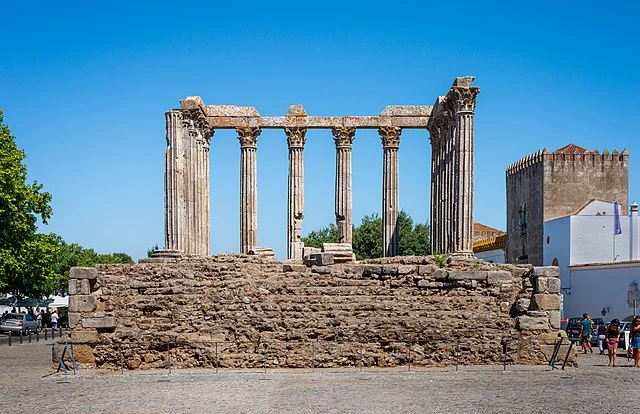The Roman Temple of Évora is a significant monument from ancient Rome located in Évora, Portugal. Constructed in the 1st century AD, the temple showcases Roman architectural techniques and reflects the influence of Roman religion and culture on the Iberian Peninsula.
Get your dose of History via Email
Historical Background
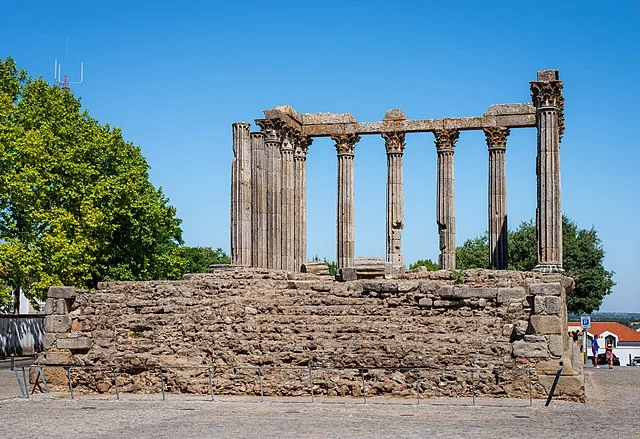
The Roman Temple of Évora was built during the early Roman Empire, around the 1st century AD, in the province of Lusitania. At that time, the Roman Empire controlled a vast territory, including present-day Portugal. Évora, then known as Liberalitas Julia, was a notable city in the region and became a center for Roman administrative and religious activities.
The temple is often referred to as the “Temple of Diana.” However, evidence does not support this designation. The temple was most likely dedicated to the Roman Emperor Augustus, who was commonly worshiped in provinces of the empire. Scholars have reached this conclusion based on the construction period and the Roman practice of emperor worship, rather than any specific inscriptions or archaeological evidence at the site.
Architectural Features
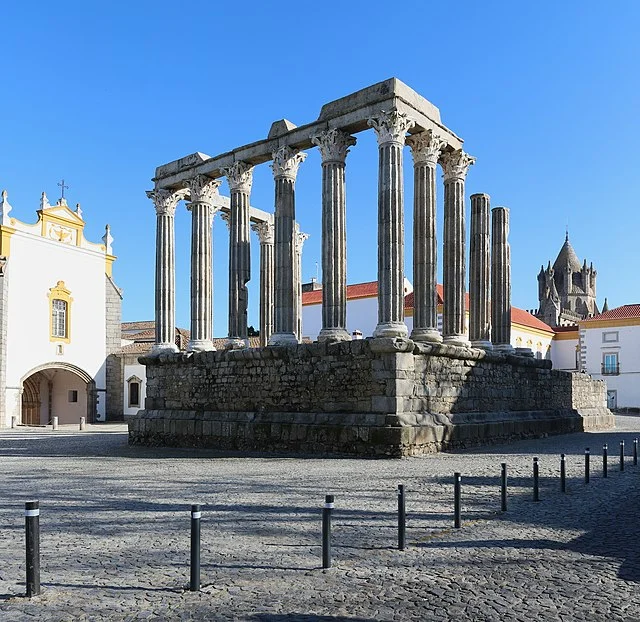
The Roman Temple of Évora stands on a high granite platform, measuring approximately 25 feet high. The structure is rectangular, following the typical Roman design, with a central cella (inner chamber) surrounded by Corinthian columns. Originally, there were 14 Corinthian columns made of marble, topped with intricate capitals. Twelve of these columns are still intact, along with sections of the entablature (the horizontal structure supported by columns). This arrangement creates a striking visual contrast between the granite base and the white marble columns.
The temple’s design reflects the architectural principles of Vitruvius, a renowned Roman architect and engineer, who emphasized symmetry and proportion in his works. The Corinthian columns feature fluted shafts and ornate capitals, characteristics that were highly valued in Roman temple architecture. Additionally, the elevated podium on which the temple sits was a common feature of Roman temples, symbolizing the elevated status of the deities or emperors to whom the temple was dedicated.
Preservation and Changes Over Time
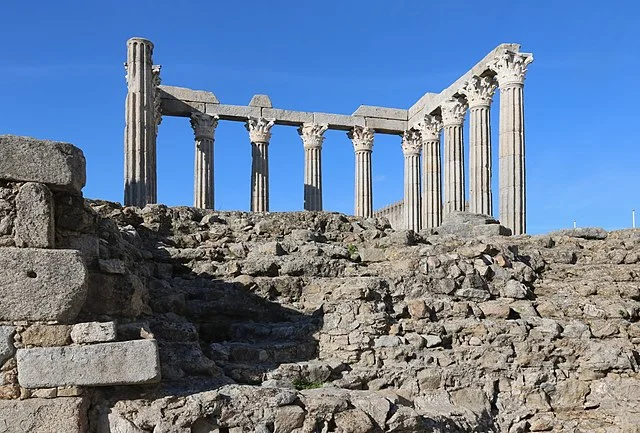
The temple has undergone several transformations since its construction. During the decline of the Roman Empire, the temple fell into disuse and was partially dismantled. In the 5th century AD, during the period of Christianization, the structure was repurposed as a Christian building. Eventually, it became integrated into a medieval fortress, which helped preserve it from complete destruction.
By the 14th century, the temple was incorporated into a slaughterhouse, a function it maintained for several centuries. Restoration work began in the 19th century, led by architect Giuseppe Cinatti, who aimed to recover its original Roman form. This restoration involved removing non-Roman structures around the temple and stabilizing the remaining columns and entablature. Thanks to these efforts, the Roman Temple of Évora remains one of the best-preserved Roman temples on the Iberian Peninsula.
Significance in Roman and Portuguese History
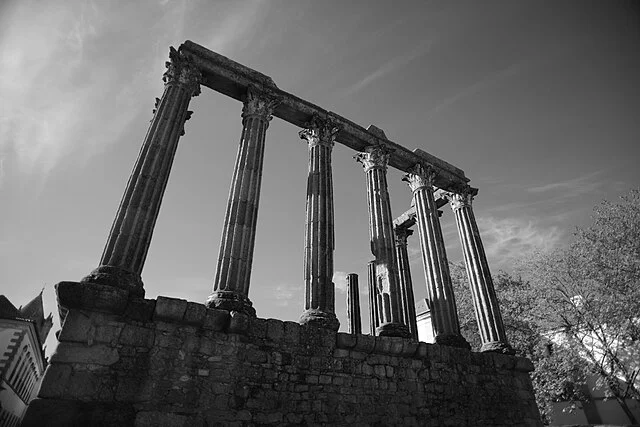
The Roman Temple of Évora holds significant historical and cultural importance. As one of the few surviving Roman temples in Portugal, it represents the spread of Roman religion, architecture, and governance throughout the empire. Évora itself, a UNESCO World Heritage site, reflects the enduring influence of Roman culture and urban planning on Portuguese history.
In Portuguese culture, the Roman Temple of Évora symbolizes the country’s long-standing ties to the ancient Roman world. Today, the temple stands as a testament to Roman engineering and architectural skill and provides valuable insights into Roman religious practices and urban planning in provincial cities.
Modern-Day Importance and Tourism
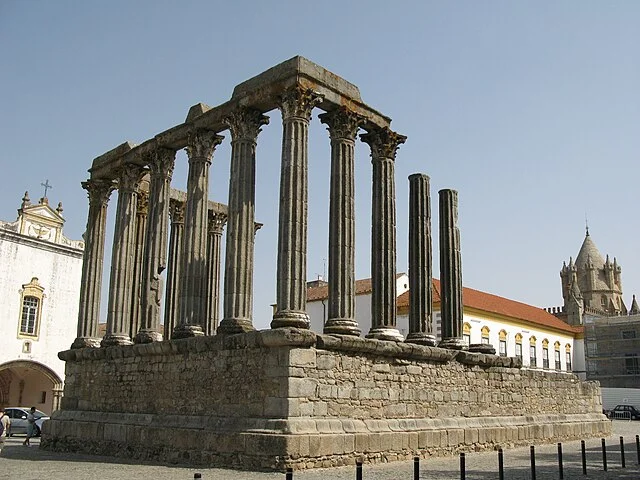
The Roman Temple of Évora remains a major tourist attraction and a landmark of the city. It draws both local and international visitors, highlighting Portugal’s Roman heritage. The site is easily accessible from Évora’s historic center and is a focal point for understanding Roman architecture and history in the region. Educational tours and archaeological research continue to enhance public knowledge about the site’s history, architecture, and role in the broader context of Roman civilization.
Conclusion
The Roman Temple of Évora is an exceptional relic from the Roman era, showcasing the empire’s architectural style and religious practices. Though its original purpose remains partially speculative, the structure has endured centuries of change, from its likely dedication to Augustus to its later use in Christian and medieval contexts. Today, it stands as a reminder of Portugal’s ancient past and its connections to the broader Roman world.
Source:

